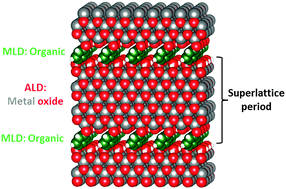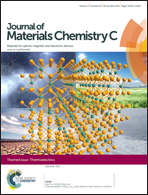Inorganic–organic superlattice thin films for thermoelectrics
Abstract
Nanoscale layer-engineering is an attractive tool to tailor the performance of thermoelectric materials as it potentially allows us to suppress thermal conductivity without significantly hindering the electrical transport properties. By combining the state-of-the-art thin-film fabrication technique for inorganics, i.e. atomic layer deposition (ALD), with its emerging counterpart for the organics, i.e. molecular layer deposition (MLD), it is possible to fabricate in a single reactor oxide–organic thin-film superlattices in which periodically introduced single/few-molecule organic layers alternate with thicker thermoelectric oxide layers. In such fundamentally new types of superlattice materials the oxide–organic interfaces with notable property mismatch are anticipated to hinder the phonon transport and/or bring about charge confinement effects thereby enhancing the material's thermoelectric figure-of-merit. The experimental data so far gathered for the (Zn,Al)O:HQ and (Ti,Nb)O2:HQ systems (HQ stands for hydroquinone) show significantly suppressed thermal conductivities. Here in this topical review we summarize the experimental and computational studies carried out on these superlattice materials and discuss the future potential of the ALD/MLD-fabricated inorganic-organic superlattice and nanolaminate thin-film structures in thermoelectrics.

- This article is part of the themed collection: The Chemistry of Thermoelectric Materials

 Please wait while we load your content...
Please wait while we load your content...